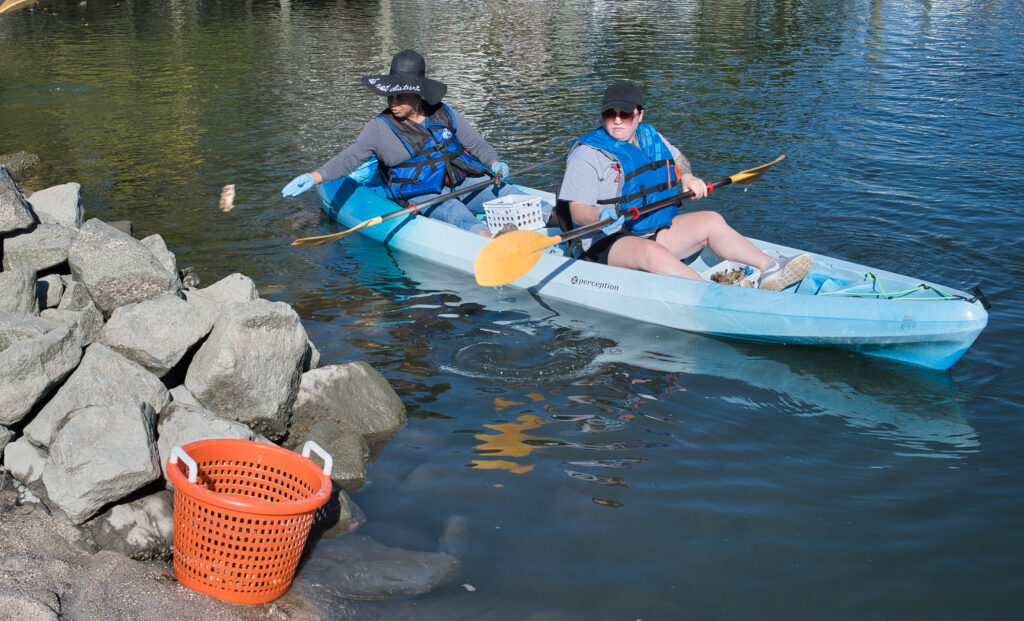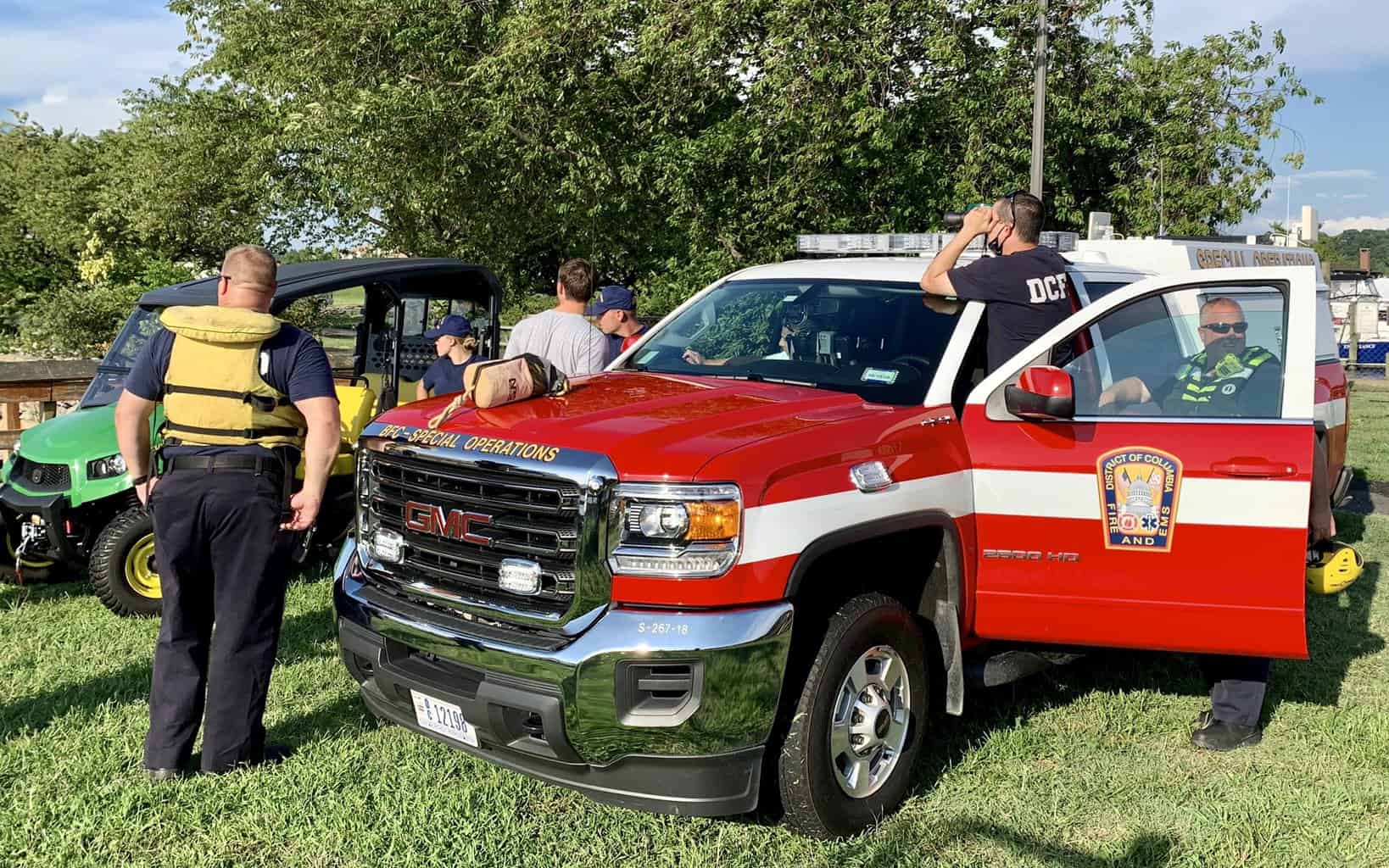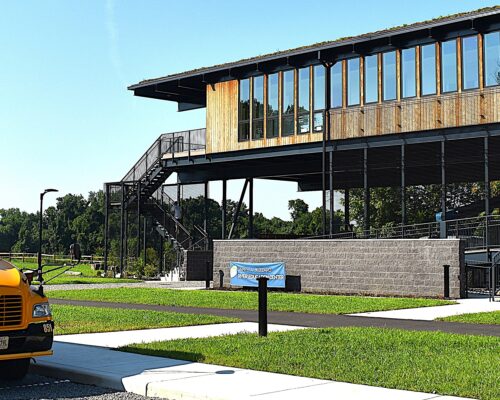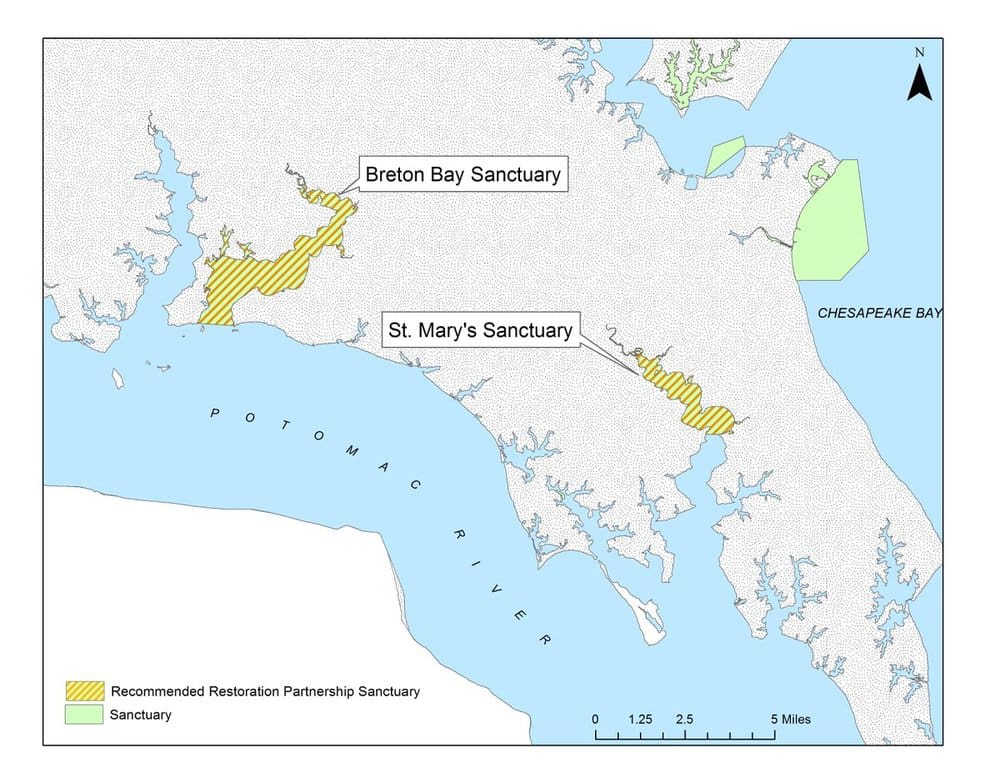The Elizabeth River Project (ERP)’s novel new resiliency lab, designed to move with decades of sea level rise, is getting closer to being finished and welcomed its first guests with a unique event: oyster restoration done by kayak.
The new Pru and Louis Ryan Resilience Lab in Norfolk is not officially open yet, but that did not keep staff and volunteers from using the kayak launch and outdoor classroom. Volunteers received training in the classroom, then launched kayaks to spread spat (baby oysters) in nearby waters.
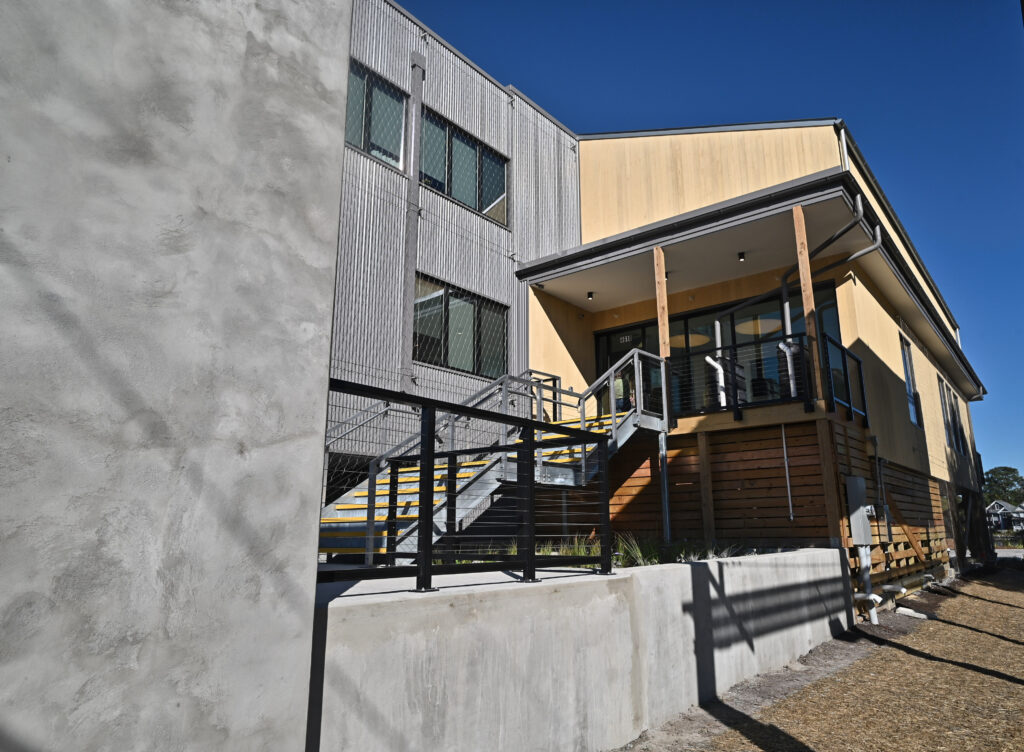
The lab, named after major ERP donors Pru and Louis Ryan, is a fantastic example of building responsibly on the coast of the Chesapeake Bay. ERP staff have moved into the building, but the grand opening won’t be held until the spring of 2024, as certain parts of the facility are still under construction. The building incorporates a wealth of resilient features such as living shorelines, rain gardens, solar power, solar lighting, flood resistance, pervious paving, green roofs and the outdoor classroom.
Fourteen volunteers arrived to the outdoor classroom on a recent Saturday to learn about ERP’s spat catching program. Then they launched kayaks and spread those spat out into local waterways. Each summer volunteer “spat catchers” hang cages containing oyster shells off local docks and other structures. Spat need hard structure to attach to at this early stage of their life. The shells in the cages provide a somewhat safe place for the spat to attach. In 2022, volunteers collected 1,698 spat. In 2023, the 46 cages collected a stunning 3,400 spat and counting—more than double the amount from the previous year. Students from Norfolk State University assisted with the spat counting. All that spat is a great sign of improving water quality.
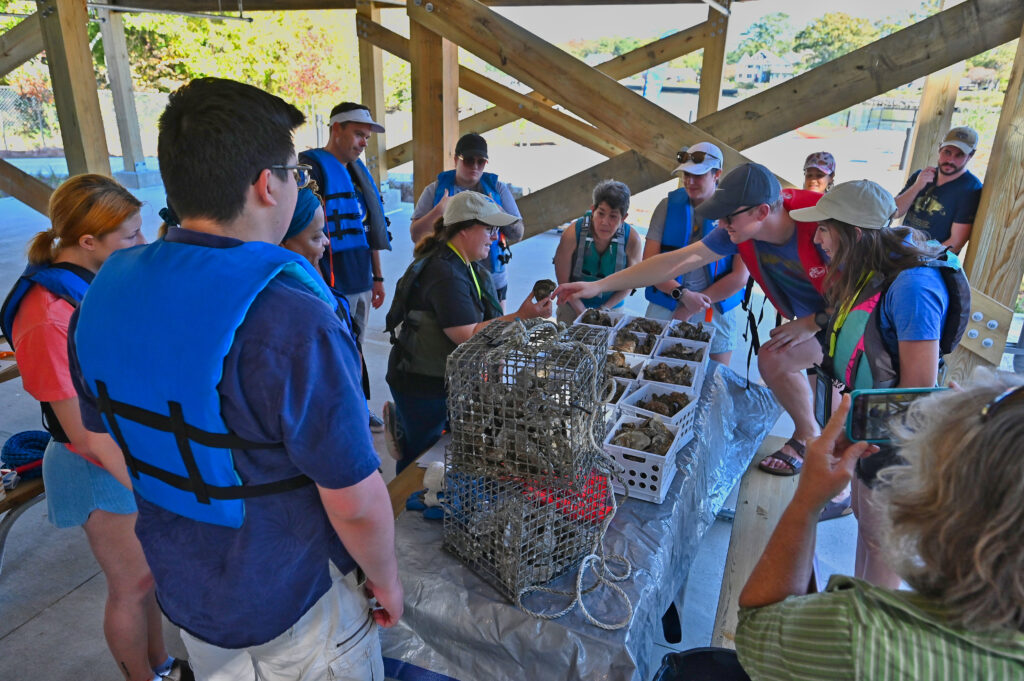
The volunteers consisted of local citizens as well as students from Virginia Tech. After some instruction on the spat program and safety, the volunteers collected baskets of spat-on-shell, put on their Personal Flotation Devices, and launched their kayaks. Each kayak contained two volunteers and two boxes of spat. Mary Bennett, an Environmental Scientist at ERP, led the group down Knitting Mill Creek into the Lafayette River. The volunteers placed the spat-on-shell along rip rap and on existing oyster reefs.
The afternoon was a resounding success. Volunteers scattered the spat-on-shell and returned safely to port. Considering some of the volunteers had never been in a kayak before, that is an accomplishment. The ERP has frequent events for volunteers. You can learn more at elizabethriver.org. You can jump directly to the Ryan Lab at elizabethriver.org/ryan-resilience-lab.
-Kendall Osborne

